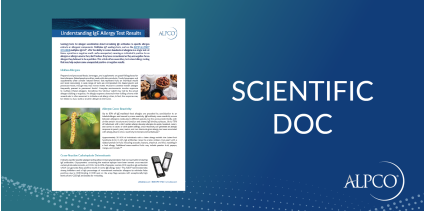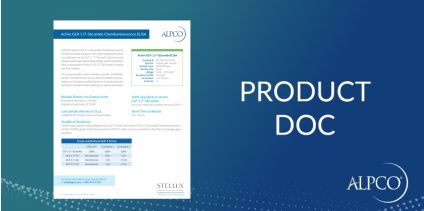Secretory IgA Chemiluminescence ELISA
The Secretory IgA Chemiluminescence ELISA is a chemiluminescent immunoassay kit intended for the quantitative determination of secretory IgA antibodies (sIgA) in human stool. For Research Use Only. Not for use in diagnostic procedures.
The sIgA ELISA is compatible with the following products for the preparation of stool extracts:
30-EZEX-100: Easy Stool Extraction Device
10-EXBUF-225: Extraction Buffer 4X, 225 mL
10-EXBUF-55: Extraction Buffer 4X, 55 mL
IgA antibodies are secreted by epithelial cells on mucosal surfaces1. Secretory IgA (sIgA) typically exists as a dimer consisting of two IgA1 or IgA2 antibodies linked by a 15 kD joining chain. A 70 kD secretory component is added when the antibodies cross mucosal epithelial cells into the lumen2. Human sIgA is resistant to acid and proteolytic enzymes. sIgA in feces is derived from saliva, bile, and intestinal fluid3. sIgA plays a crucial role in the composition and maintenance of commensal or normal host microbiota4 and protects the intestinal epithelium from toxins, viruses, and pathogenic bacteria5.
1. Corthesy, Blaise, 2013, Multi-facted functions of secretory IgA at mucosal surfaces, Frontiers in Immnology, 4:185, 1-11.
2. Curran, Rhonda, Immunoglobulin A (IgA), British Society for Immunology, [Online]. https://www.immunology.org/public-information/bitesized-immunology/receptors-and-molecules/immunoglobulin-iga Accessed 6Apr2020.
3. Dion, C., 2004, Measurement of faecal immunoglobulin A levels in young children, Journal of Clinical Laboratory Analysis, 18:195-99.
4. Mathias, A., 2014, Role of secretory IgA in the mucosal sensing of commensal bacteria, Gut Microbes, 5(6):688-695.
5. Mantis, N.J., 2011, Secretory IgA’s complex roles in immunity and mucosal homeostasis in the gut, Mucosal Immunology, 4(6):603-611.







